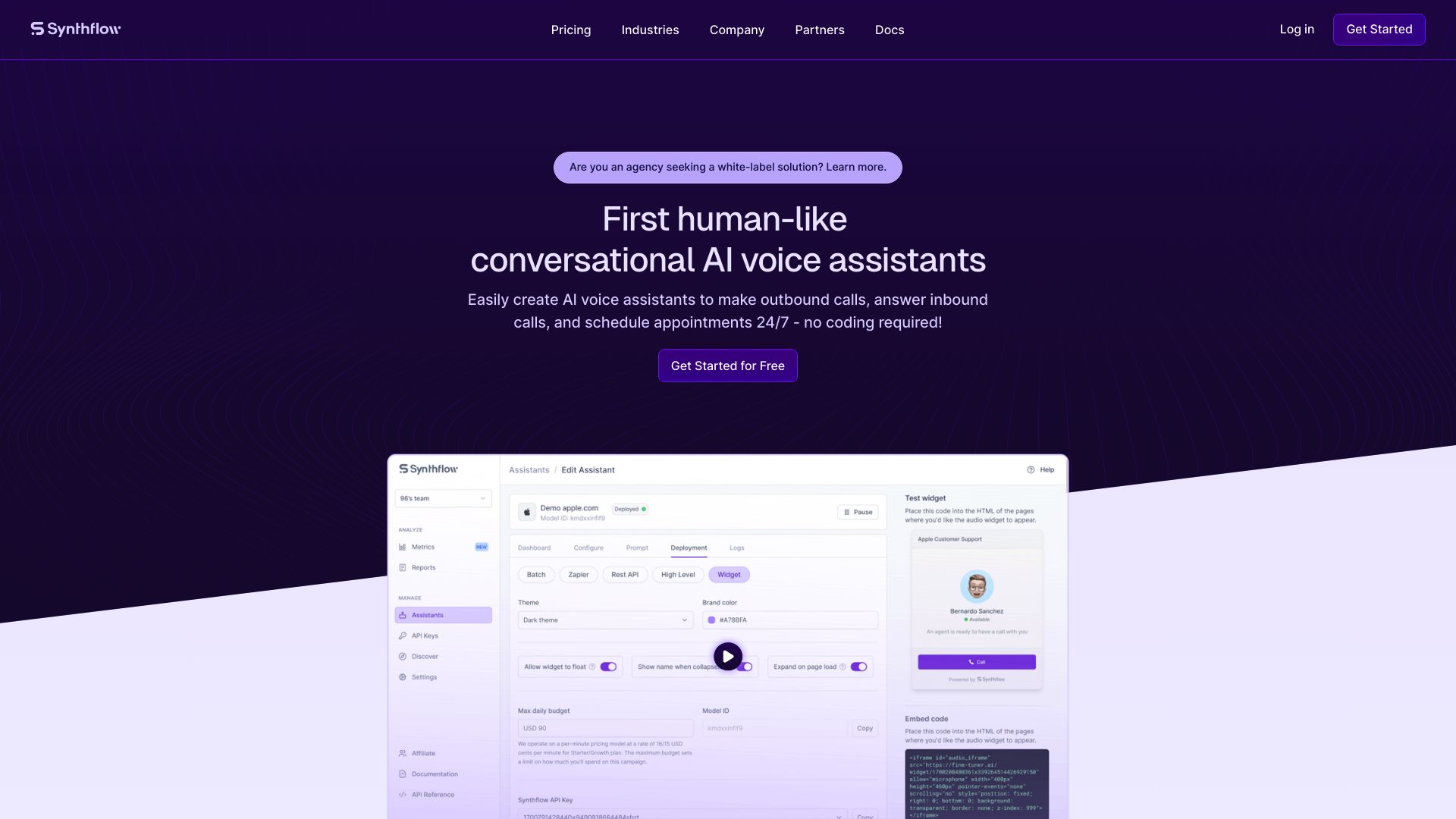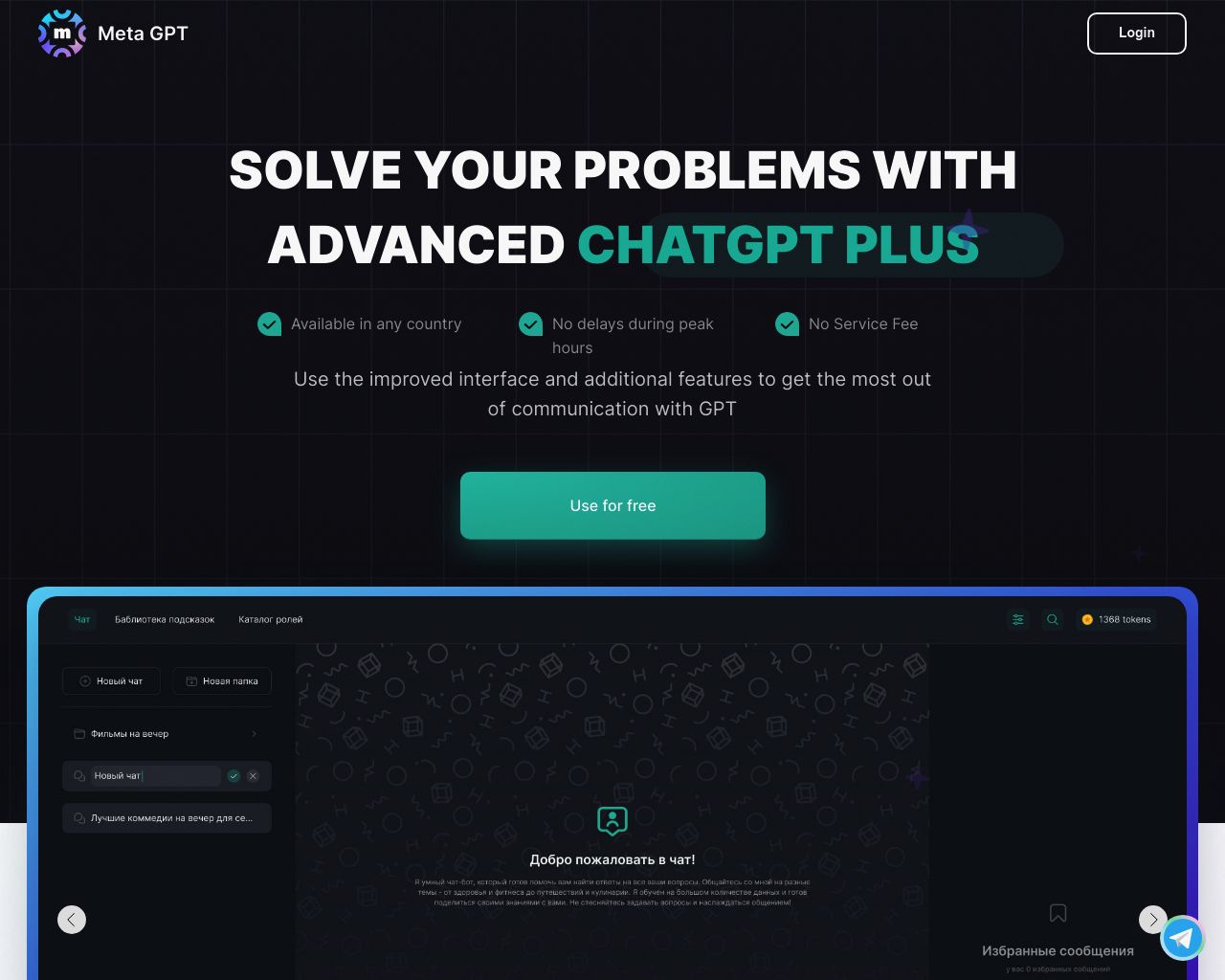Synthflow vs. MetaGPT: AI Platforms Compared
AI platforms Synthflow and MetaGPT offer powerful solutions for businesses seeking to leverage artificial intelligence, but each takes a distinct approach. Synthflow focuses on creating voice AI assistants through a user-friendly interface, while MetaGPT simulates software development teams for complex projects. This comparison explores their key features, strengths, and limitations to help you determine which platform best suits your needs. We’ll also introduce SmythOS, a versatile alternative that combines ease of use with advanced capabilities, potentially offering the best of both worlds for businesses across industries.
Synthflow Overview
Synthflow empowers businesses to create customizable AI voice assistants without coding expertise. The platform’s no-code interface and pre-built templates make it accessible to users with varying technical backgrounds, from developers to non-technical professionals.


Synthflow’s AI assistants handle diverse tasks, including customer support, lead generation, and appointment scheduling. The platform prioritizes data security, offering unlimited secure storage in a dedicated Pinecone environment. Integration capabilities with tools like 11Labs and Twilio enhance functionality, allowing businesses to seamlessly incorporate AI assistants into existing workflows.
Synthflow empowers businesses to create customizable AI voice assistants without coding expertise. The platform’s no-code interface and pre-built templates make it accessible to users with varying technical backgrounds…
Key features include a visual builder for creating AI agents, support for multiple environments (development and production), and autonomous agent capabilities. Synthflow enables batch deployments for large-scale communication campaigns and real-time interactions through website widgets. The platform maintains context within conversations, improving personalization and response quality.
While Synthflow excels in voice AI, it lacks explicit support for multimodal interactions combining text, voice, and visual inputs. The platform also doesn’t offer foundation AI models or direct integration with Huggingface AIs. However, Synthflow compensates with robust problem-solving capabilities, multi-agent collaboration features, and comprehensive documentation to help users maximize the platform’s potential.
Synthflow’s vision centers on democratizing AI technologies, making them accessible to businesses regardless of technical expertise. By streamlining operations and enhancing customer engagement, the platform aims to drive growth and improve satisfaction across various industries.
MetaGPT Overview
MetaGPT revolutionizes multi-agent collaboration by merging human Standardized Operating Procedures (SOPs) with advanced Large Language Models (LLMs). This open-source framework simulates a software company’s structure, assigning distinct roles like product managers, architects, and engineers to AI agents for efficient teamwork.


MetaGPT’s core philosophy, “Code = SOP(Team),” integrates established human practices into AI-driven processes. This approach enables the platform to tackle complex software development tasks, producing high-quality code and comprehensive documentation. The framework breaks down projects into manageable subtasks, allowing specialized agents to contribute their expertise effectively.
MetaGPT revolutionizes multi-agent collaboration by merging human Standardized Operating Procedures (SOPs) with advanced Large Language Models (LLMs).
Developers and technical teams benefit from MetaGPT’s ability to generate detailed requirement documents, design artifacts, and interface specifications. This feature enhances the success rate of final code and facilitates better human-AI interaction. The platform’s assembly line paradigm ensures each agent plays a crucial role in the overall project, resulting in more accurate and robust solutions.
While MetaGPT excels in software development scenarios, it may have limitations in other domains. The platform’s focus on mimicking software company operations could potentially restrict its versatility in non-technical fields. Additionally, users might face a learning curve in understanding and implementing the SOP-based approach effectively.
MetaGPT’s vision aims to set a new standard in AI and multi-agent collaboration. By leveraging human-like SOPs and structured communication protocols, the framework expands AI agents’ capabilities, enabling them to handle increasingly complex and diverse tasks across various domains. This approach not only improves multi-agent system performance but also opens up new possibilities for AI application in real-world scenarios.
Feature Comparison
Synthflow and MetaGPT offer distinct approaches to AI agent development, each with unique strengths and limitations. Synthflow excels in creating customizable voice AI assistants through a no-code interface, making it accessible to users without technical expertise. Its platform supports autonomous agents for tasks like customer support and appointment scheduling, with robust security features including data encryption and OAuth authentication.
MetaGPT, on the other hand, focuses on simulating a software company structure for complex development tasks. It assigns specialized roles to AI agents, such as product managers and engineers, enabling collaborative problem-solving. While MetaGPT provides powerful tools for software development, including requirement generation and design artifacts, it lacks some of Synthflow’s user-friendly features like visual builders and no-code options.
Notably, Synthflow offers hosted agents for both development and production environments, as well as integration with Zapier for workflow automation. MetaGPT’s strength lies in its ability to handle intricate software projects, but it may present a steeper learning curve for non-technical users. Both platforms support multi-agent collaboration, but MetaGPT’s approach is more structured around software development processes, while Synthflow’s is geared towards business applications like customer service.
Feature Comparison Table
| Synthflow | MetaGPT | SmythOS | |
|---|---|---|---|
| CORE FEATURES | |||
| Visual Builder | ✅ | ❌ | ✅ |
| No-Code Options | ✅ | ❌ | ✅ |
| Multimodal | ❌ | ✅ | ✅ |
| SECURITY | |||
| IP Control | ❌ | ❌ | ✅ |
| COMPONENTS | |||
| Huggingface AIs | ❌ | ✅ | ✅ |
| Classifiers | ❌ | ✅ | ✅ |
| Data Lakes | ❌ | ❌ | ✅ |
| DEPLOYMENT OPTIONS (EMBODIMENTS) | |||
| Staging Domains | ❌ | ❌ | ✅ |
| Production Domains | ❌ | ✅ | ✅ |
| DATA LAKE SUPPORT | |||
| Hosted Vector Database | ✅ | ❌ | ✅ |
| Sitemap Crawler | ✅ | ❌ | ✅ |
| YouTube Transcript Crawler | ✅ | ❌ | ✅ |
| URL Crawler | ❌ | ✅ | ✅ |
| PDF Support | ❌ | ✅ | ✅ |
| Word File Support | ❌ | ✅ | ✅ |
| TXT File Support | ❌ | ✅ | ✅ |
Best Alternative to Synthflow and MetaGPT
SmythOS emerges as the superior alternative to Synthflow and MetaGPT, offering a comprehensive platform for AI agent development and deployment. Our solution combines ease of use with a robust feature set, making it ideal for businesses of all sizes and technical abilities.
Unlike Synthflow’s focus on voice assistants or MetaGPT’s software development simulation, SmythOS provides a versatile environment for creating AI agents across multiple domains. We offer a visual drag-and-drop interface that simplifies agent creation without sacrificing functionality. This approach democratizes AI development, allowing both technical and non-technical users to build sophisticated AI solutions.
SmythOS provides a versatile environment for creating AI agents across multiple domains… allowing both technical and non-technical users to build sophisticated AI solutions.
SmythOS stands out with its extensive integration capabilities. While Synthflow and MetaGPT have limitations in their connectivity, our platform seamlessly integrates with a wide range of APIs, data sources, and AI models. This flexibility enables users to create AI agents that can tackle complex, real-world problems across various industries.
Our platform excels in scalability and deployment options. SmythOS supports multiple environments, including development and production, with features like staging domains and production-ready deployments. These capabilities ensure smooth transitions from development to live environments, a critical aspect often overlooked by competitors.
Security and data management are paramount in SmythOS. We provide robust data encryption, OAuth authentication, and IP control features, addressing enterprise-level security concerns. Our hosted vector database and support for diverse data formats, including PDFs and Word documents, surpass the offerings of both Synthflow and MetaGPT, making SmythOS the ideal choice for organizations dealing with complex data ecosystems.
Conclusion
Synthflow and MetaGPT offer unique approaches to AI agent development, each with distinct strengths. Synthflow excels in creating voice AI assistants through a user-friendly, no-code interface, making it accessible to non-technical users. MetaGPT simulates a software company structure, providing powerful tools for complex software development tasks.
While both platforms have their merits, SmythOS emerges as the superior choice, offering unparalleled versatility and accessibility. Our drag-and-drop interface simplifies AI workflow creation, allowing users to build sophisticated agents without extensive coding knowledge. With support for over 300,000 integrations and compatibility with various AI models, SmythOS provides unmatched flexibility for businesses across industries.
Unlike Synthflow and MetaGPT, SmythOS offers a comprehensive solution that combines ease of use with advanced capabilities. Our platform supports multimodal interactions, problem-solving capabilities, and seamless deployment options, including APIs, chatbots, and scheduled agents. This versatility, coupled with robust security features and scalability, makes SmythOS the ideal choice for businesses looking to harness the full potential of AI.
Ready to revolutionize your AI workflow? Explore our diverse range of AI-powered agent templates to jumpstart your projects or create a free SmythOS account to experience the future of AI agent development. With our 30-day money-back guarantee and unlimited agent creation, there’s never been a better time to unlock the power of AI for your business.
Last updated:
Disclaimer: The information presented in this article is for general informational purposes only and is provided as is. While we strive to keep the content up-to-date and accurate, we make no representations or warranties of any kind, express or implied, about the completeness, accuracy, reliability, suitability, or availability of the information contained in this article.
Any reliance you place on such information is strictly at your own risk. We reserve the right to make additions, deletions, or modifications to the contents of this article at any time without prior notice.
In no event will we be liable for any loss or damage including without limitation, indirect or consequential loss or damage, or any loss or damage whatsoever arising from loss of data, profits, or any other loss not specified herein arising out of, or in connection with, the use of this article.
Despite our best efforts, this article may contain oversights, errors, or omissions. If you notice any inaccuracies or have concerns about the content, please report them through our content feedback form. Your input helps us maintain the quality and reliability of our information.
